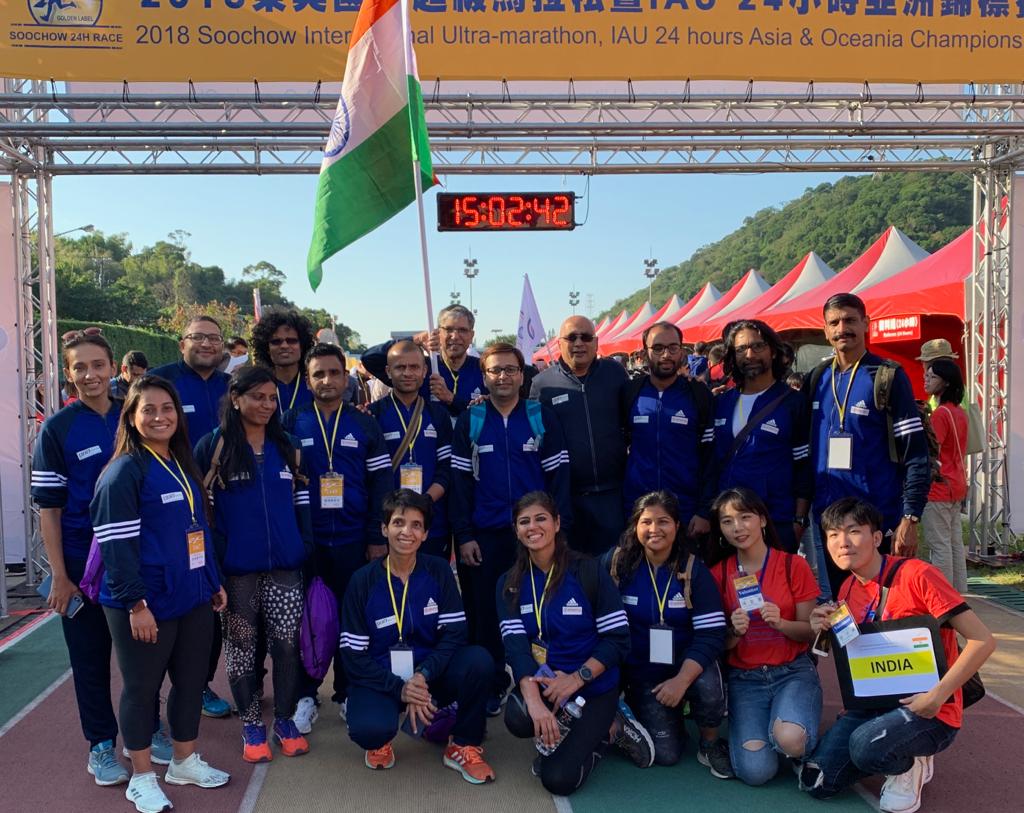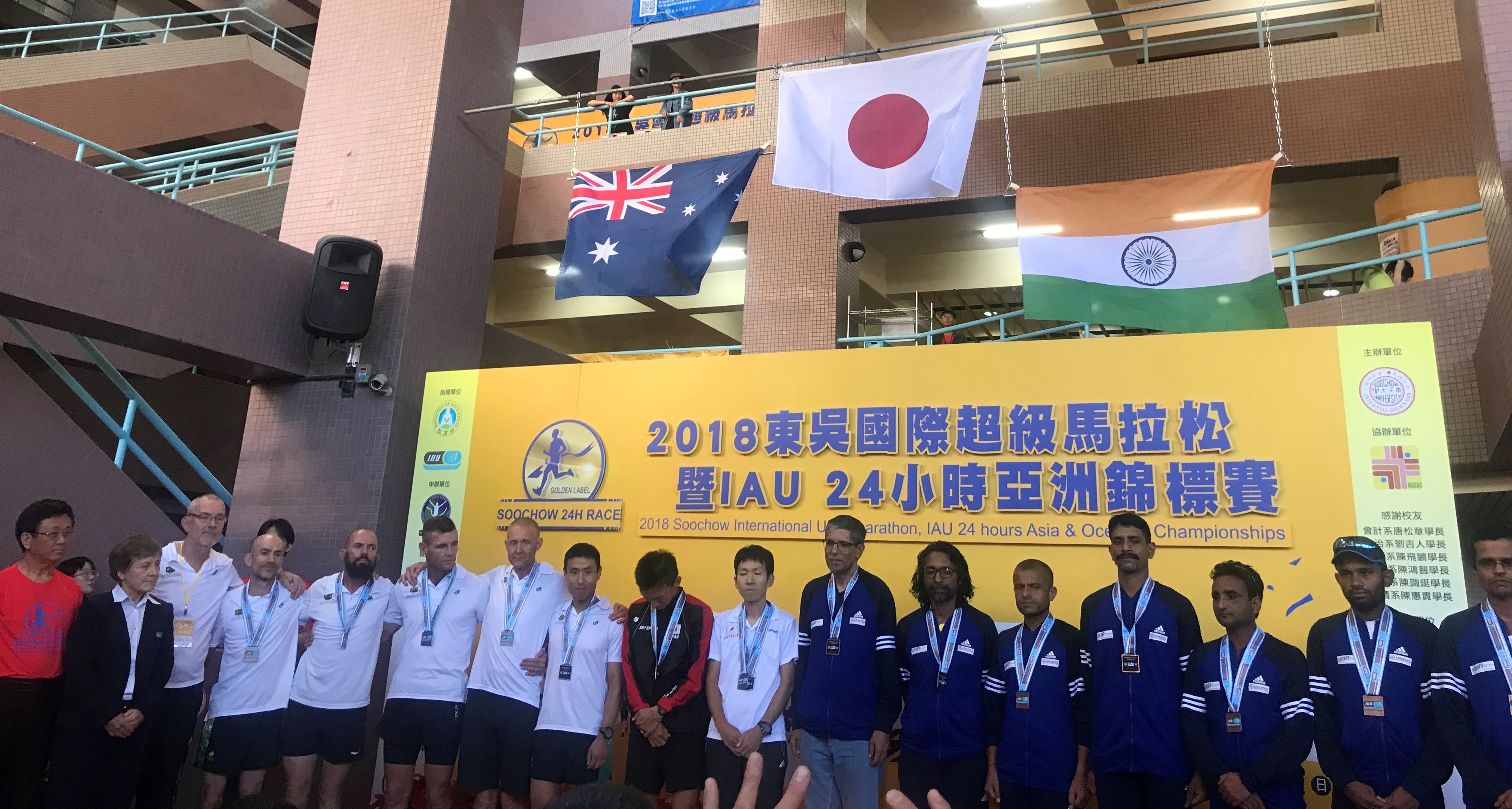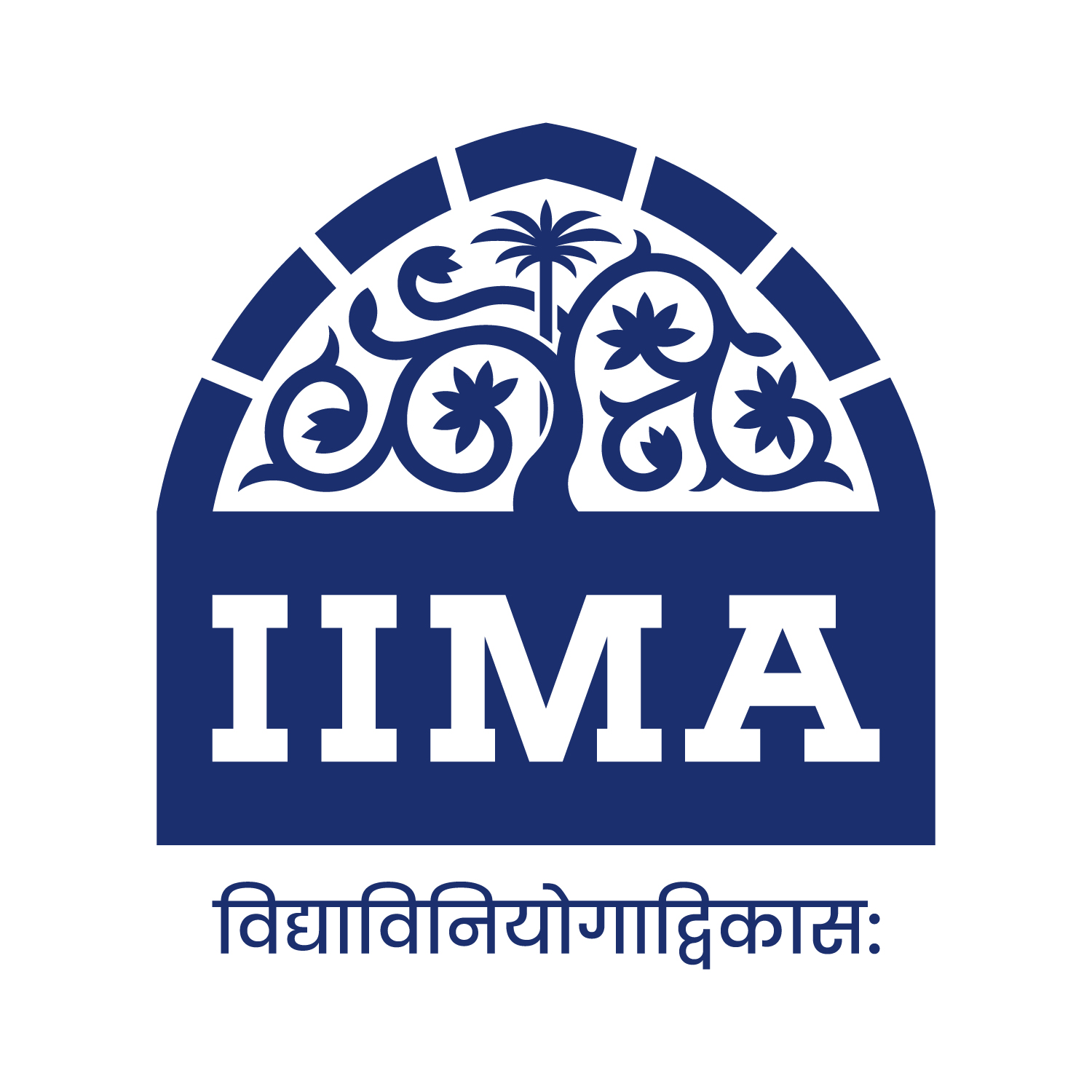WHEN MATHS HELPED CREATE HISTORY

Sunil Chainani is from (PGP1980) batch and lives in Bangalore. After spending many years being an Advisor and Board member on several mid-size companies like Fabindia, he has stepped off all Board positions and is now a Mentor and Angel Investor. A passionate sports lover, he also sponsors the award for Best Sportsperson at IIMA.

Podium Indian Ultra team
As a student, I used to enjoy Maths classes but History was tough for me. Little did I know that one day, Maths would help an Indian team create history.
Sports has been a passion for me since childhood – and after spending a lot of time on squash courts in different parts of the world, I shifted sport to distance running. Over the past 15 years, I have run about 40 marathons/ultramarathons (ultras are races longer than the 42.195 KM marathon) in many cities and countries.
Running as a sport has grown rapidly in India, and while we are still a long way from world standards, there has been a clear improvement in our performance in recent years. The first ultramarathon in India was held in 2007, whereas famous races like the 89 km Comrades Marathon in South Africa have been held for almost a century. I have seen a dramatic improvement in the quality of our ultramarathoners over past 5 years, and we have been sending teams to participate in international events since 2017, with the expectation that our runners would learn a lot from the experience.
I was honoured to be invited as the team leader for the Indian teams at the world 100 km run in Croatia in September 2018; and the Asia & Oceania 24 Hour Championships in Taipei in December 2018. Each of our 100 km teams achieved their personal best timing in Croatia, but we were well short of top international standards and so we had little expectations going into the Taipei championship.
Our team for the Asia & Oceania 24 Hour Championships had 6 men, 6 women and 4 support crew including me. In the ultramarathons, support crew has a vital role to play for providing nutrition, medical and moral support for the runners. The world champions like Japan, Australia, New Zealand, Taiwan, and Mongolia had strong teams and my hope was that our runners would gain invaluable international exposure in the face of world-class competition.
The 24 Hour run was round a track at Soochow University stadium in Taipei. Unlike stadiums in India, this stadium does not have stands, making it quite open with little shade and also no windbreakers. This venue has hosted races for almost 2 decades and this race is now an IAU (International Association of Ultra Marathoners) gold labeled. The aim here is to cover maximum distance in 24 hours, and the medals are awarded to the top 3 individual men and women (by distance covered), and top 3 men’s and women’s teams (for the team calculation, the total distance covered would be the sum of the distances of top 3 runners in the team).
SOME PRELIMINARY FACTS
1. Prior to this event, there were 15 other runners who had clocked distances better than our top runner in men’s race, Ullas. More than 8 of them had run over 20k more than Ullas’s best run of 216 km (which was our National record)
2. In the men’s team event, the total of best distance ever achieved by our top 3 runners was 604 km. We were well behind Mongolia (645), Taiwan (674), Australia (742) and Japan (797)
3. Our women’s team was even further behind the other teams
4. At the start, runners were divided into 3 lanes, with the fastest being in Lane 1 and slowest in Lane 3. None of our team started in Lane 1, and most were in fact in Lane 3.
Our team included 6 male and 6 female runners with a crew of 4, which included another IIMA alumni – Sachin Kotak (PGP 2005) whose wife Meenal was also participating in the event. Our best hope meant our runners running strong and putting in personal best performances.
The initial weather forecast for the race day was ‘pleasant cloudy’, but it turned out to be really warm and sunny, touching 29 °C. The 9 am start meant that the first quarter of the race was the hottest, and this turned out to be a huge challenge for most runners. Few of our athletes suffered from cramps, dehydration, and nausea.
Within the first 3 hours of the race, we started to see our athletes finding the conditions tough, and our team doctor was kept really busy. Ullas was the only runner who managed a steady pace and did not need any medical attention. Our second fastest runner, Sunil Sharma set off at a quick pace and was ahead of Ullas for the first quarter of the race, while the other men were well behind. By the halfway point, Sunil had slowed down and was 12 km behind Ullas. At the 12-hour mark, our top 3 male runners were in 8th, 19th, and 26th position, marking us well behind the top 4 teams.
Ullas, who clocked 126 km in the first 12 hours, maintained a steady pace and gradually moved up the leaderboard about the 16-hour mark. I noticed that he was behind very few runners from Japan and Australia, and almost 18 km ahead of the top runners from Mongolia and Taiwan. This made me feel that we may not be too far behind these teams in team positions. Unfortunately, the announcers gave the mileage of the runners every hour, but they did not give team positions.
So, I went to the online tracker and manually pulled out the mileage of top 3 runners of Mongolia, Taiwan, and India. I also continued to track these numbers till the end of the race. At around the 17-hour mark, we were just 5 to 6 km short of the 3rd and 4th placed teams, with Japan and Australia well ahead (the positions being calculated on the basis of distance covered till that time by the top 3 runners from each team). At this stage, both Sunil Sharma and our next fastest runner Meena were struggling with injury but I got a chance to inform them that we had a shot at a podium finish, and this got them fired up. As Ullas got stronger, he moved up to 4th position overtaking all but the 3 strong Japanese runners, and this also helped our team get closer to the 3rd and 4th placed teams.
By the time we got to the 20-hour mark, Ullas was in striking distance of 3rd position and we were in level with Taiwan in 3rd, with Mongolia a short distance behind. I was unsure if Sunil and Meena could sustain the pace especially as they needed frequent medical attention. To their credit, they bucked up and by the 22-hour mark, we had moved ahead of Taiwan with a decent 13km cushion. Ullas was in 3rd place and even held the 2nd place for a short period. Now, the key was to stay focused and not take too much time at breaks. We kept Sunil and Meena going and pushed them out quickly whenever they came in for support. By this time, one of our team members Manoj had stopped running due to injury and was helping me monitor the mileage. As the final hour began, Ullas was 3 km ahead of 4th placed Japanese runner and our team was comfortably in 3rd place. As all the 3 runners stayed strong to the finish, history was made as India won the first ever international medals in ultrarunning (individual and team Bronze). Ullas clocked 250 km, an astonishing 34 km better than his previous best and both Sunil and Meena clocked their personal best mileage for a team total of 645 km. We were the only team to improve our mileage compared to the previous best, and I am sure all teams would have had much better distances if the weather had been cooler.
Our other 3 male runners were below expectations, had a tough day due to injuries or due to the effects of heat. Apart from the personal best from Hema, the women had a relatively disappointing outing, but all would have learned a lot and will live to fight another day.
I am delighted to have an ‘I was there moment’ and it is hard to explain the feeling when you are on the podium watching our beautiful flag go up!!



Sorry, the comment form is closed at this time.